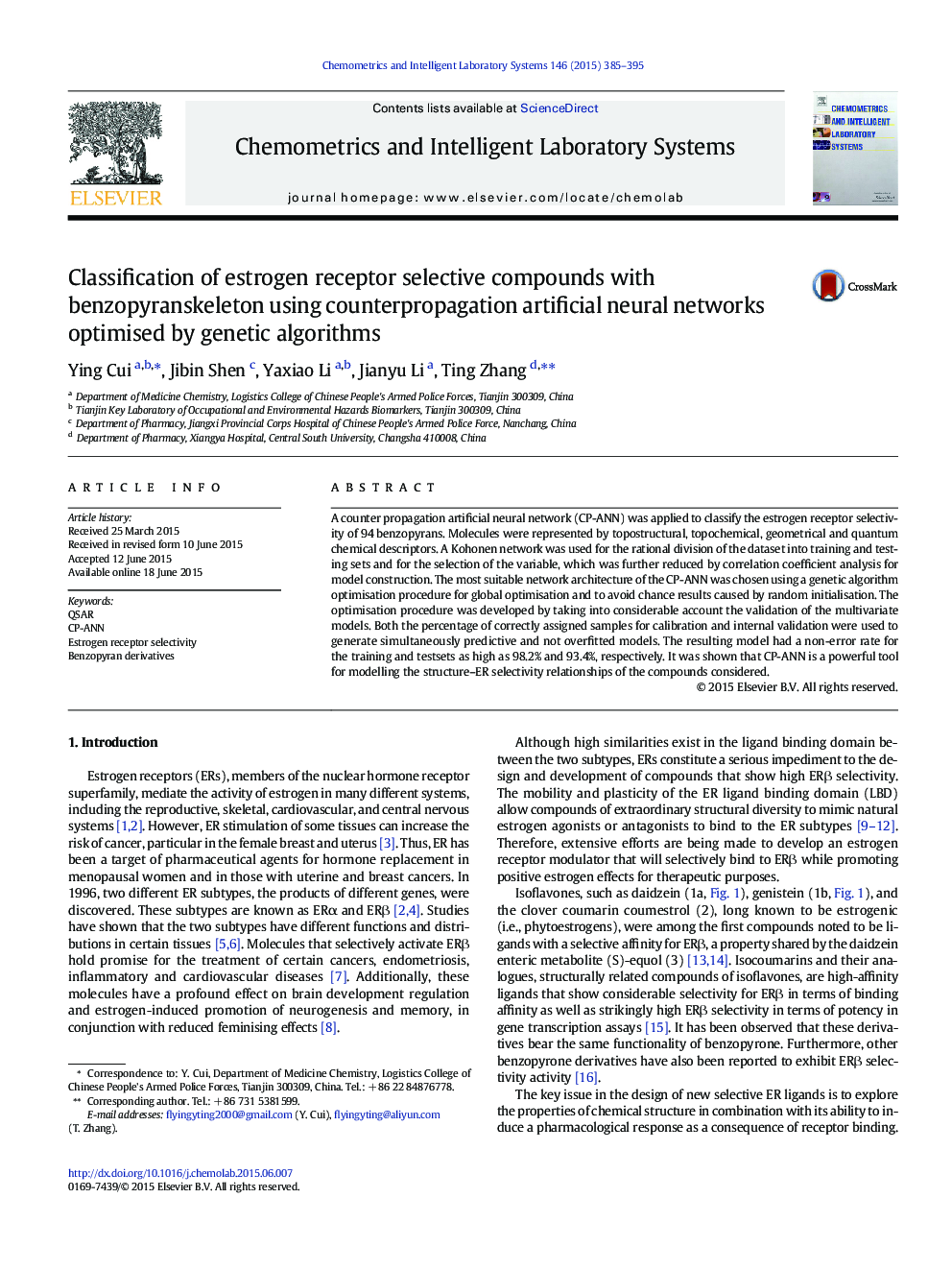| Article ID | Journal | Published Year | Pages | File Type |
|---|---|---|---|---|
| 7563184 | Chemometrics and Intelligent Laboratory Systems | 2015 | 11 Pages |
Abstract
A counter propagation artificial neural network (CP-ANN) was applied to classify the estrogen receptor selectivity of 94 benzopyrans. Molecules were represented by topostructural, topochemical, geometrical and quantum chemical descriptors. A Kohonen network was used for the rational division of the dataset into training and testing sets and for the selection of the variable, which was further reduced by correlation coefficient analysis for model construction. The most suitable network architecture of the CP-ANN was chosen using a genetic algorithm optimisation procedure for global optimisation and to avoid chance results caused by random initialisation. The optimisation procedure was developed by taking into considerable account the validation of the multivariate models. Both the percentage of correctly assigned samples for calibration and internal validation were used to generate simultaneously predictive and not overfitted models. The resulting model had a non-error rate for the training and testsets as high as 98.2% and 93.4%, respectively. It was shown that CP-ANN is a powerful tool for modelling the structure-ER selectivity relationships of the compounds considered.
Keywords
Related Topics
Physical Sciences and Engineering
Chemistry
Analytical Chemistry
Authors
Ying Cui, Jibin Shen, Yaxiao Li, Jianyu Li, Ting Zhang,
